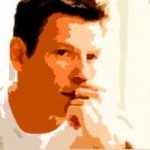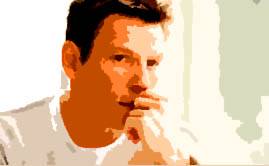One of the basic techniques that we teach in our flagship course – Fundamentals of Structural Thinking – is to think in pictures. There are a few reasons for this. One is that a visual language is dimensional. In other words, you can see various levels of information at once. That’s a good thing because it lets you understand the relationship of things quickly. Another way to say this is you can see how things connect, influence each other, and, from that, understand, see what the structure is and why it behaves as it does.
Another advantage thinking in pictures gives us is clarity. Often people think they are being clear, but too often they are vague. But when we translate what they are saying into a visual realm, we can see where we need to fill in information, test assumptions, separate concepts from facts, and clarify what is not clear. For the consultant, coach, manager, and person in the helping professions, this is an invaluable skill to have. From this technique, new insights and understanding become possible, and lives change.
Most of us, even the most visual, do not actually think in pictures to the degree that we teach it in the FST. Even the most visual people tend to talk to themselves while they are picturing what is being said. They process information in two domains: visual and verbal. When this is the case, the verbal tends to obstruct the visual. Words are easier to process and so the pictures take a back seat. One of the techniques we teach is the ability to be visual without any sub-dialogue – to see the pictures without “gabbing to yourself.” As you can imagine, this is quite a discipline. But, through it, you increase your comprehension enormously.
We have been taught to think in verbal language. The limitation to this verbal language is that it is linear. It is hard to see things dimensionally. Information is processed in sequence – one thing at a time. That means you can’t easily understand how things connect. Without that understanding, it is hard to see the underlying structures that drive behaviour. If you can’t see what is causing behaviour, it is very hard to enable change and have that change be sustainable. That is why so many change efforts first seem to work, but later, revert as if the change never happened.
Neuroimaging such as PET scans of the brain have shown that children with learning disabilities often have problems with their visual centers. In other words, if we compared most children to those with learning problems, we would find that most children have active visual centers, but the ones with learning problems usually do not. Their visual centers are much less active. But, when they learn to think in pictures, there is tremendous improvement. When their visual centers become more active, their comprehension goes up dramatically. Much of this work has been pioneered by Nancy Bell through her company Lindamoodbell. In their process, children first learn to picture single words. After that, the next step is to visualize phrases. Then complete sentences, then paragraphs. This visual training enables the students to increase their learning skills and it makes a dramatic difference in their learning process.
In a similar way, training in structural thinking has a series of exercises that increase visual fluency. As part of that development, your learning to picture allows you an increased ability to listen to information, translate it into a visual form, and study those pictures, non-verbally. In other words, you are able to shut off your intrusive verbal mind for a period of time. Because of that, you can suddenly see how things relate to each other, what tendencies for behavior exist, what it would take to change the structure leading to those tendencies, and why things are the ways they are today. This type of insight is not usually available. But when it is, it changes everything.
Another FST technique is how you translate words into pictures. It’s as if you have a little film crew in your head making a movie of what is being said. The pictures tell the story. And, when you are listening to others, especially in a professional situation, there will be some missing pictures. These missing pictures lead to targeted questions, and laser like penetration into unexplored areas. This is transformative and life changing.
Often there are pictures that contradict other pictures. People are not always consistent. The job of the structural consultant is to sort out these discrepancies. There are only two possibilities: one of the two contradictory ideas is incorrect; or there is information we don’t have that explains the apparent contradictions. For example, what if your client said, “Last year was a great year. All of our sales were down.” These statements form two pictures that are contradictory. Perhaps one of the statements is not accurate.
“How can last year be great if sales were down?”
“Oh, did I say last year. It was the year before that was great. Last year was a disaster. Sales were down.”
“Oh, did I say sales were down. They were up. It was a great year.”
Or there is information we don’t have that we need to have to understand the apparent discrepancy.
“Sales were down, but we got the patent on the technology, so it didn’t matter about our sales. We make royalties on everyone’s sales. What a great year!”
Positive and Negative Space
From art there is a technique called negative space. This is when the artist does not try to draw the object, but the space around the object. Of course, the result will be a picture of the object, but it can look so different. In the FST and in structural thinking, we have a similar technique. If something is filling the positive space, such as “the door was on the right,” in the negative space, there is a left. We may not need to know if there was anything on the left of the door, but, in our picture, there is a left. There has to be because if you didn’t have a left, you could not have a door on the right. Another example is if the statement someone made was, “She finally got it right.” In the positive space we can picture a “her, getting it right.” We don’t know what she got right yet, but we can ask about that later, and fill in that picture. But there is even more information in the negative space. The word “finally” gets us pictures of other times in the past when she did not get it right. That is what the statement implies. But people don’t always agree with what they are implying. So we can ask a very targeted question based on our pictures. “Has she gotten it wrong in the past?” We expect a “yes” answer. But if we get a “no,” we can change our pictures, knowing the word “finally” did not fit into the statement.
Often, people assume a lot about reality. When we apply the technique of negative space, reality becomes clearer and in more focus. Impressions may or may not stand up to scrutiny. Often, people are reacting or responding to concepts that turn out not to be true. This can lead to very bad decisions, ones that are not based on reality but a wrong impression of reality. Through structural thinking, we can back up and study reality as it is, independently from our previous concepts. This change is profound. It is also very practical. When you know what reality is, you can make better decisions on behalf of those things you want to create. You can’t play the violin in tune if you can’t hear the pitch. You can’t create the life you want if you can’t get a fix on reality as it is.
Start with Nothing
One of the techniques in the FST that takes some learning is step one: start with nothing. Our entire educational system is based on an opposite notion, start with knowledge. In fact, it is the job of education to fill our heads with knowledge so we can compare what we know with what we see. This process works pretty well if you are going to train the masses to negotiate the world. But the down side is a “this looks like that” mentality. People think they know what’s going on before they look. They jump to conclusions, theories, speculations, models, past experiences, and other frames of reference that distort their view of reality. What we were taught about the so-called “scientific process” was to:
• Generate a hypothesis
• Test the hypothesis against reality
• From that, reject those things that didn’t fit
• And accept those things that did fit
So, it starts with a theory that we either prove to be right or wrong. But that is NOT how true creative scientists work. They start with nothing, in other words, no theory, or other frames of reference. Sir Isaac Newton, one of the most gifted geniuses who almost single handedly invented physics and calculus, said, “Hypotheses have no place in science.” And Rene’ Descartes said, “To understand some set of phenomenon, first rid yourself of all preconception.” Einstein was said to have his revolutionary insights from two traits he had. One, he thought visually, and, tow, he was able to start with nothing so he was not influenced by past concepts.
Our minds want to jump to an answer in light of not knowing something. That is natural. The discipline we learn in the FST is how to not fill in the empty spaces of our understanding with speculation, theories, models, conjecture, and biases. This is not easy at first, and takes real training and practice. But the rewards are superb.
Starting with nothing, and then thinking in pictures is one of the most important fundamentals of structural thinking. With that foundation, a new world opens.















